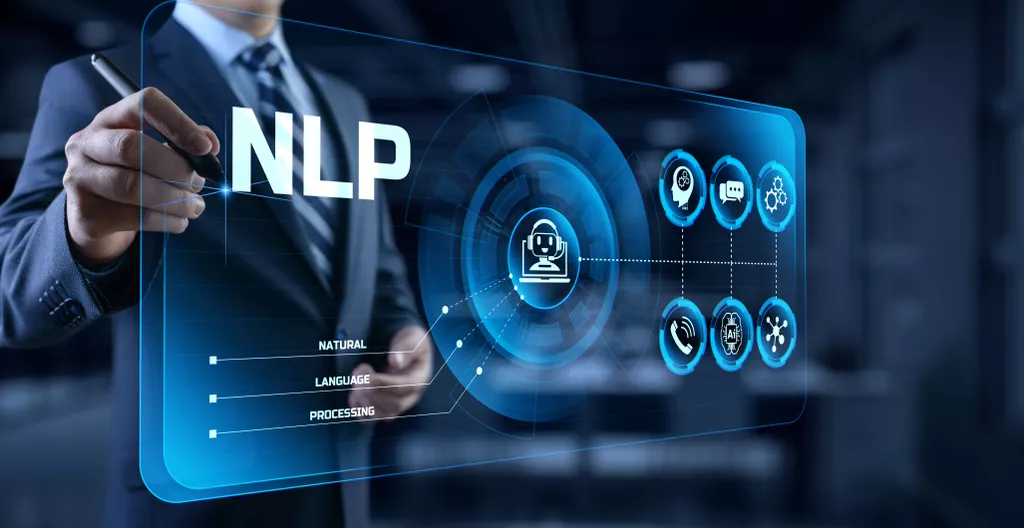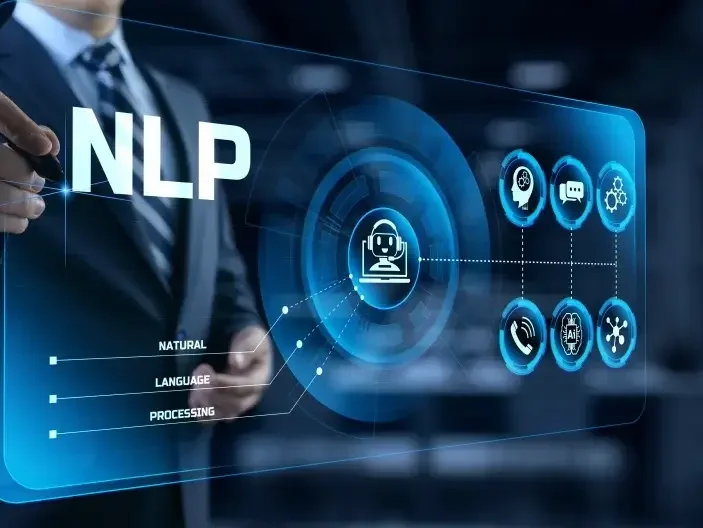Language is an integral part of our most basic interactions as well as technology. Natural language processing (NLP) lies at the intersection of these phenomena, converting language into a format that both computer systems and humans understand and use.
With the rise in artificial intelligence technology, NLP is now enjoying the same popularity. There are countless real-life examples of NLP technology that impact everyday life.
While the introduction of AI technology may seem intimidating, it is not necessarily so. Artificial intelligence technology is becoming an increasingly popular topic and almost inevitable for most companies. It can automate support, improve customer experience, and analyze reviews.
NLP is a form of AI that is easy to understand and start using. It also benefits business development.
What is Natural Language Processing?
Natural Language Processing (NLP) describes the interaction between human language and computers. It is a technology used daily by many people and has been around for many years but is often taken for granted.
Here are some examples of NLP:
- Spellchecking;
- Autocomplete;
- Voice text messages;
- Spam filters;
- Related keywords in search engines;
- Siri, Alexa, or Google Assistant.
The computer identifies the appropriate word, phrase, or response using context clues, just as any human would. This is a relatively simple technology.
NLP is superior to humans in the amount of language and data it can process. Therefore, its potential use goes beyond the examples above and makes possible tasks that would take employees months or years to complete.
Continue reading the article to find out the most famous examples of NLP usage.
Internet Search Engines
When it comes to NLP examples, search engines are the most common. When a human uses a search engine, it uses an algorithm to find web content based on the keywords provided and the searcher’s intent. The search engine “understands” what the human is looking for. If a search is “apple prices,” the search results will be based on current Apple computer prices, not fruit.

Email Filters
You have undoubtedly benefited from NLP technology if you use an email account. Once the algorithm is trained on email text data, it can successfully:
- identify;
- classify;
- flag;
Emails as regular, spam, or malicious – the letters are usually removed from your account before you even see them. Email filters such as social or promotional filters may be used depending on the email provider.
The business realizes the benefits of this technology, as 35 percent of the companies surveyed use NLP for email or text classification purposes. Additionally, strong workplace email filtering reduces the risk of opening a malicious email and limits sensitive data exposure.
Language Translation
Online translators are potent tools thanks to NLP. But it was not always so. If you remember the early days of Google Translate, you remember it suited only interlinear translation. Now it translates grammatically complex sentences without problems. This is mainly due to NLP mixed with the possibility of “deep learning.” Deep learning is a field of machine learning and helps decipher the user’s intentions, words, and sentences.
Smart Assistants
The best-known example of NLP is intelligent assistants like Siri and Alexa, which are integrating into our lives. They use NLP and divide language into parts of speech, word stems, and other linguistic features. Then Natural Language Understanding allows machines to understand language, and Natural Language Generation gives devices the ability to “speak.” NLP-based chatbots work the same way, but instead of voice recognition, they respond to text input from customers. Most online businesses use them as their primary communication tool on their websites.
Smart Text and Auto-correction
The common example of NLP is text prediction and autocorrect. It ensures that every time a mobile phone user types on their smartphone, they will suggest what they intended to type. Predictive text and autocorrect are valuable tools in word processors such as Microsoft Word, where they allow users to work quickly and accurately. From writing formal and efficient work emails to completing an entire dissertation, people use predictive writing because it speeds up work. Autocorrect corrects misspellings but does not take context into account, which leads to funny mistakes.
Text Analytics
Many businesses are now turning to NLP and text analytics to turn their unstructured data into insights. Core NLP features such as Named Object Extraction allows users to identify critical elements such as:
- names;
- dates;
- currency values;
- phone numbers.
Objects are classified according to predefined classifications. This critical information is quickly and easily found in documents of all sizes and formats, including files, spreadsheets, web pages, and social texts. Industries such as insurance are even using NLP text analytics for claims and risk management decisions.
NLP Applications are vast and powerful, and we are likely to see even more applications of this cutting-edge technology in the coming years.
Digital Phone Calls
We all hear the phrase “this call may have been recorded” but we rarely question what that entails. In most cases, they end up in the NLP system database to learn and improve in the future. Automated systems route customer calls to a help desk representative or online chatbots that respond to customer queries and provide helpful information. Many companies use this NLP practice, including large telecom providers. NLP also allows the use of a computer language close to the human voice. Phone calls can schedule appointments like haircuts and visits to the dentist can be automated, as evidenced by this video showing Google Assistant scheduling an appointment with a hairdresser.
Data analysis
Natural language capabilities are being integrated into data analysis workflows as more BI vendors offer a natural language interface for data visualization. One example is smarter visual coding offering the best visualization for the right task based on data semantics. This opens up more opportunities to explore their data using natural language statements or question fragments consisting of multiple keywords that can be interpreted and assigned a value. Using a data mining language not only improves accessibility, it also lowers the barrier to analytics in organizations outside of the expected community of analysts and software developers.
